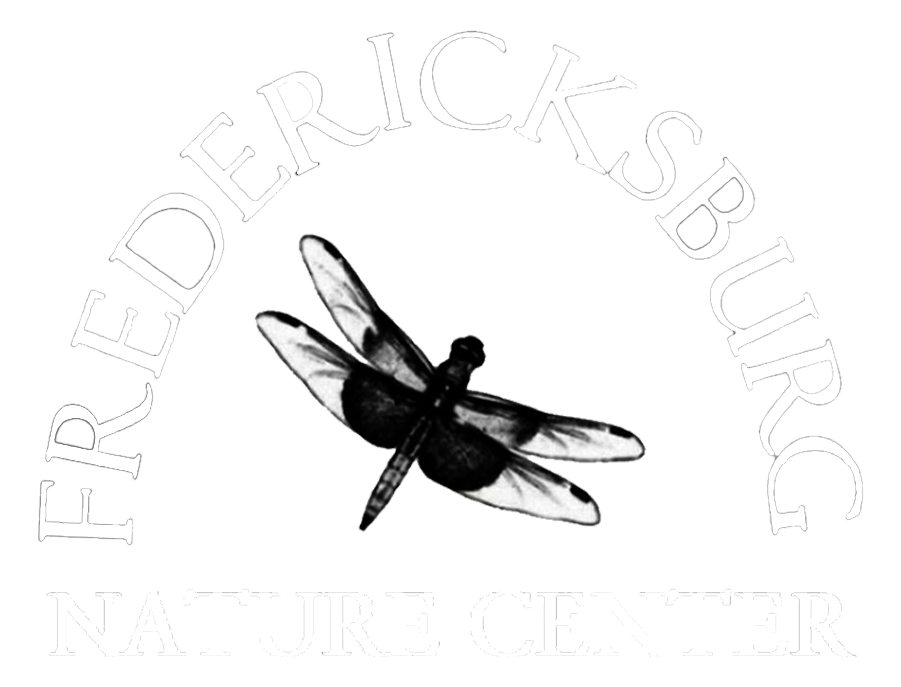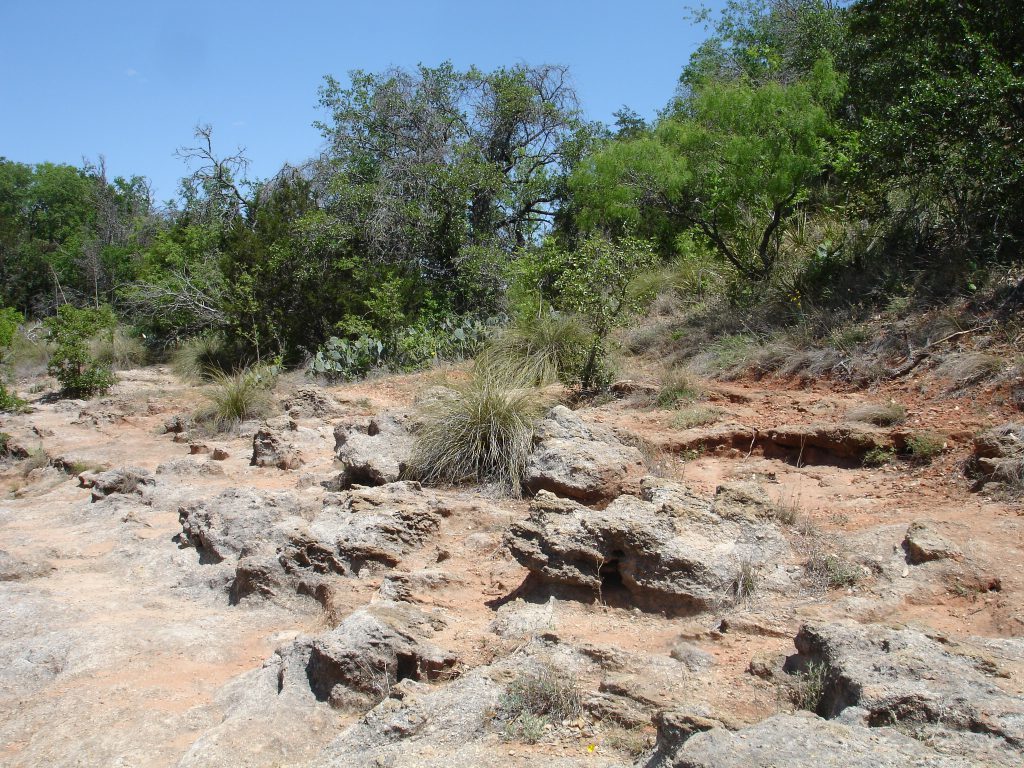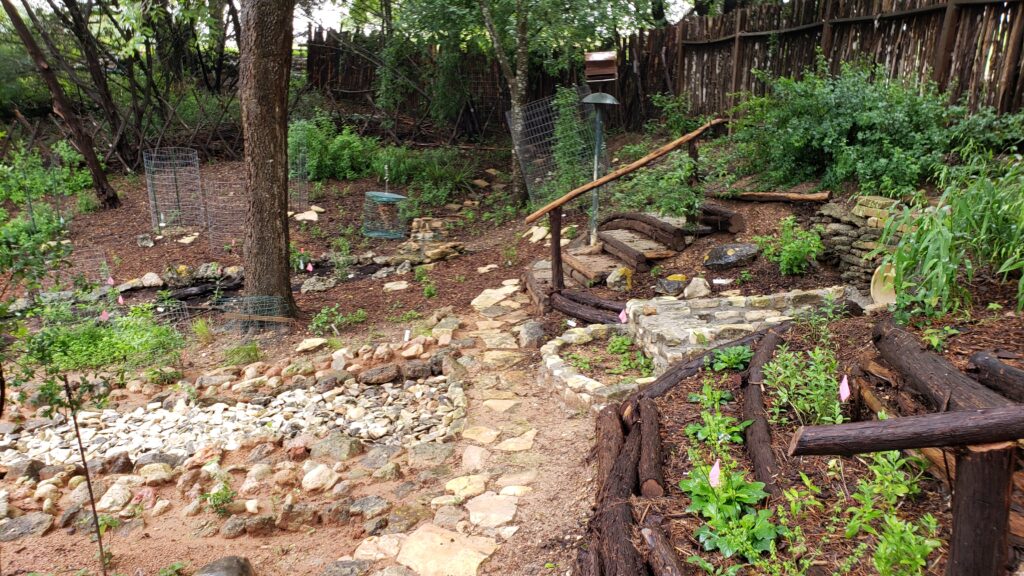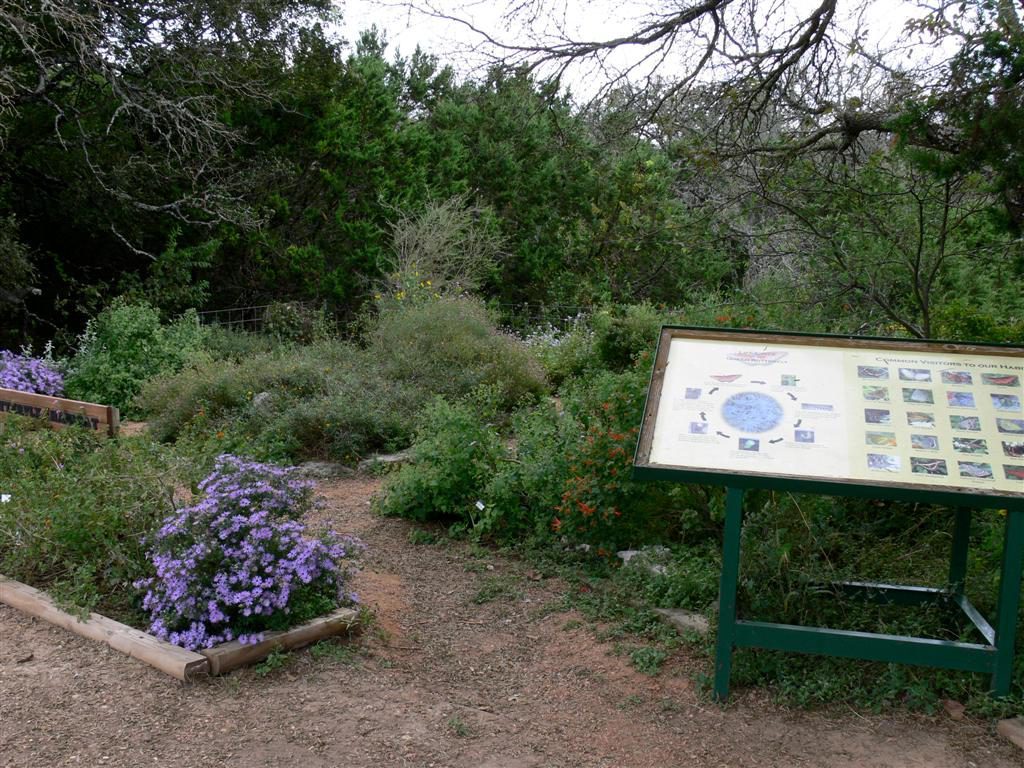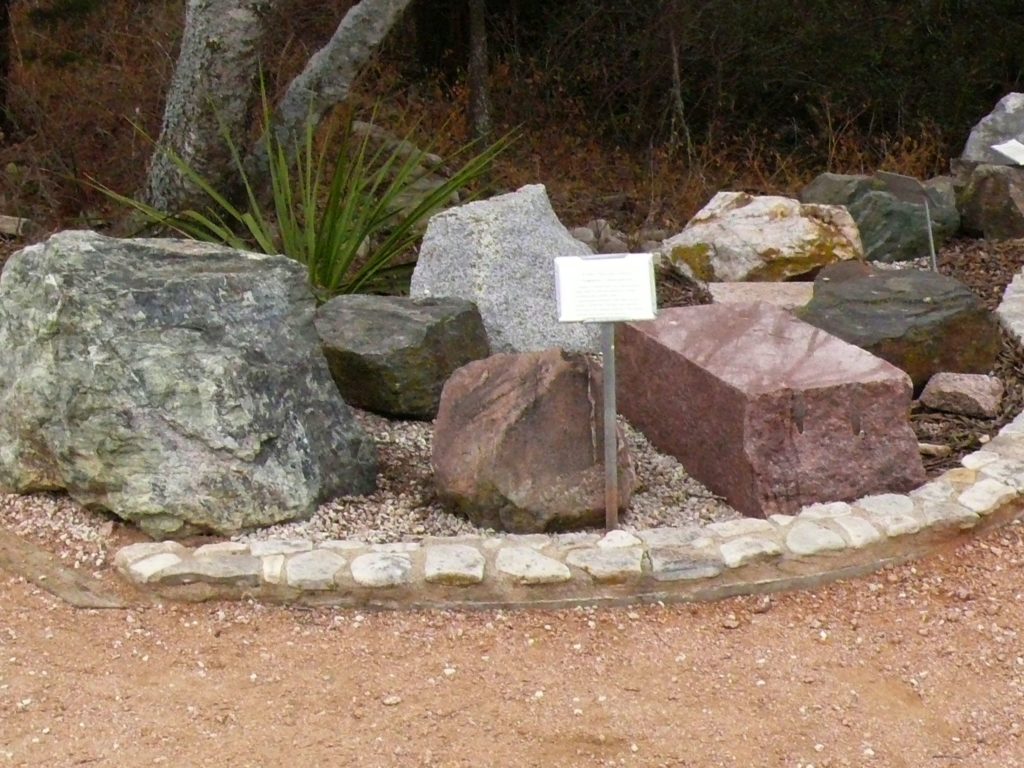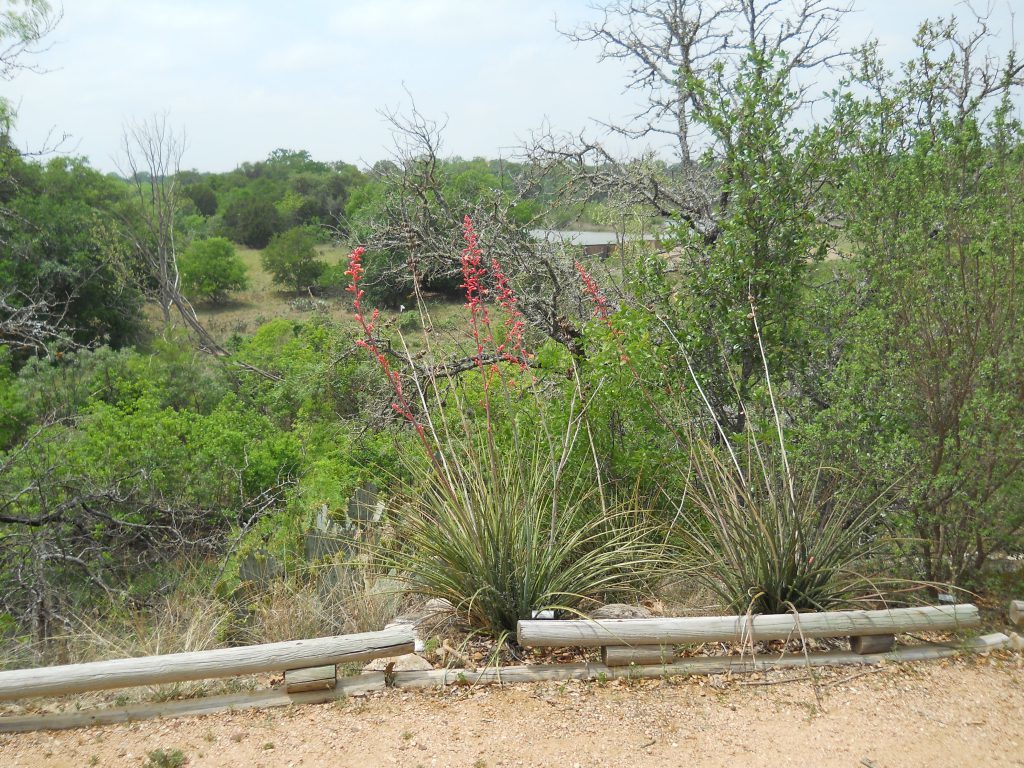Area 9: Arid Habitat
Area 10: Cedar Brake
Area 11: Bird Blind
Area 12: Butterfly Habitat
The Butterfly Habitat garden is designed to provide an area to attract butterflies and other pollinators. It is located on the upper part of the trail where the Loop Vista and Handicapped Accessible Trail run together. The garden was built with the cooperation of many local organizations, including the Boy Scouts and the Hill Country Chapter of the Texas Master Naturalists. The Butterfly Garden provides visitors examples of plants that attract butterflies by providing nectar sources as well as larval food. An artificial food source is also . The Garden also provides a photographic exhibit of butterflies you may encounter there.
Area 13: Geology & Rock Exhibit
Some Hill Country rock formations date back for more than one billion years. This exhibit features one specimen from each geological formation in the Hill Country and includes igneous, metamorphic and sedimentary rock types. In the past one billion years this area has featured mountain building periods as well as having been covered by oceans or seas more than once. Please do not deface our rock specimens.
Area 14: Topography
The Texas Hill Country was formed by erosion rather than uplift. After the retreat of the Cretaceous seas that deposited thick limestone formations, the area was subjected to erosion. Drainage systems set-up by the depression of the Gulf of Mexico slowly worked their way into the limestone layers. More resistant limestone layers formed the “hill tops” as the less resistant clays and marls eroded away around them leaving a topography of mesas and canyons.
